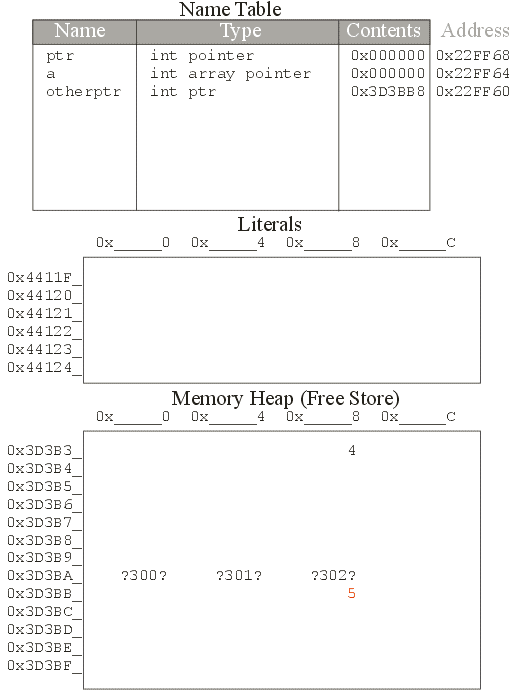|
Dynamic Memory Allocation in C++
An Introduction |
|
Prof. David Bernstein |
| Computer Science Department |
| bernstdh@jmu.edu |
|
Dynamic Memory Allocation in C++
An Introduction |
|
Prof. David Bernstein |
| Computer Science Department |
| bernstdh@jmu.edu |
new operator is used to dynamically allocate
memory
int *ptr;
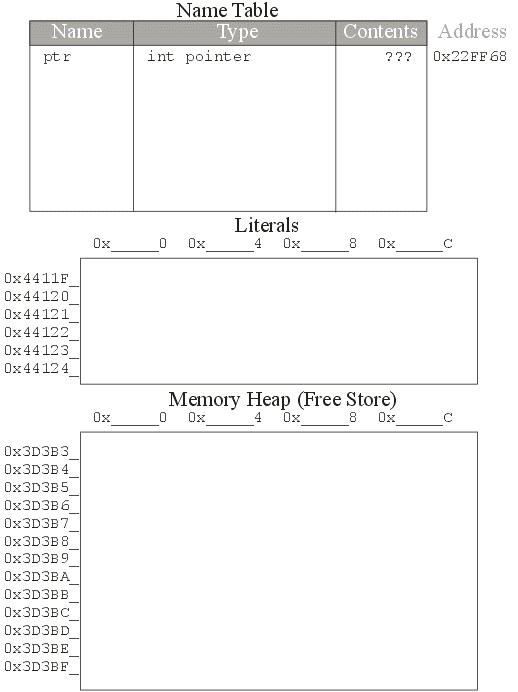
ptr = new int;
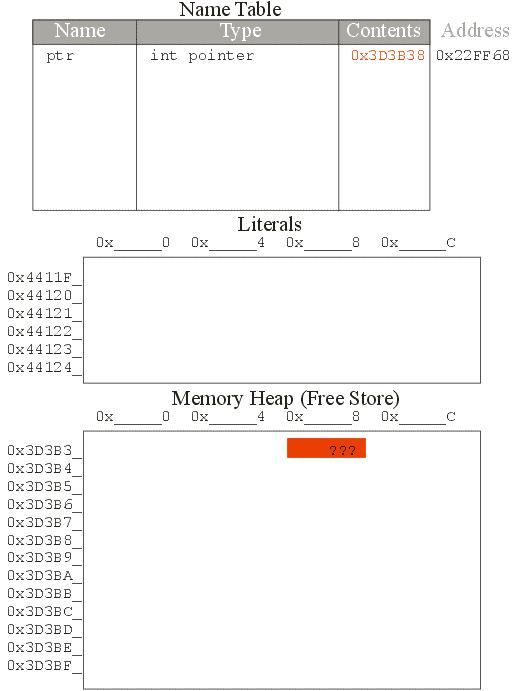
*ptr = 7;
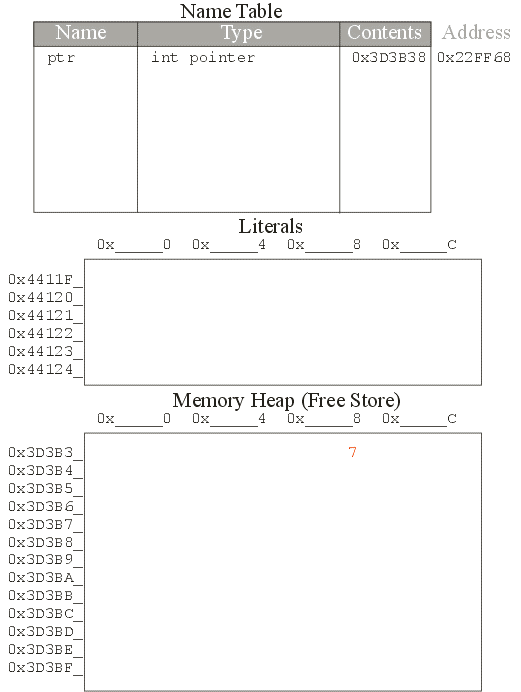
int *a;
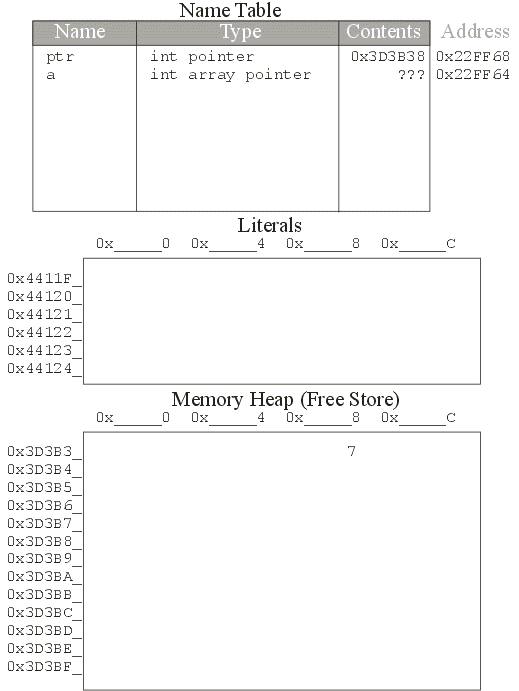
a = new int[3];
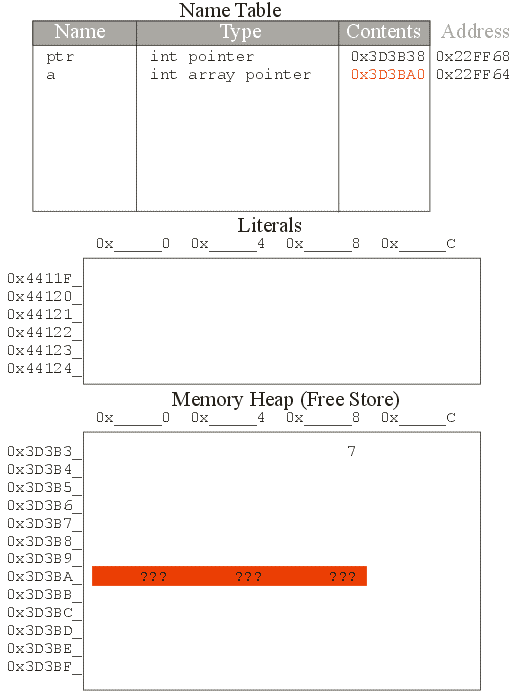
*a = 300;
*(a+1) = 301;
*(a+2) = 302;

*a and a[0] are
syntactically different ways to refer to the same value
[] operator performs pointer arithemtic
and de-references the resulting pointer.new:
delete operator in C++delete ptr;
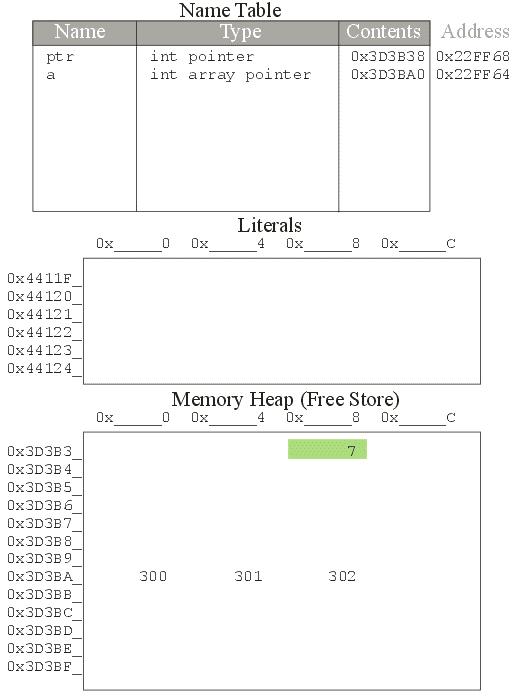
delete operator does not delete the
pointer, it takes the memory being pointed to
and returns it to the heapptr = NULL;
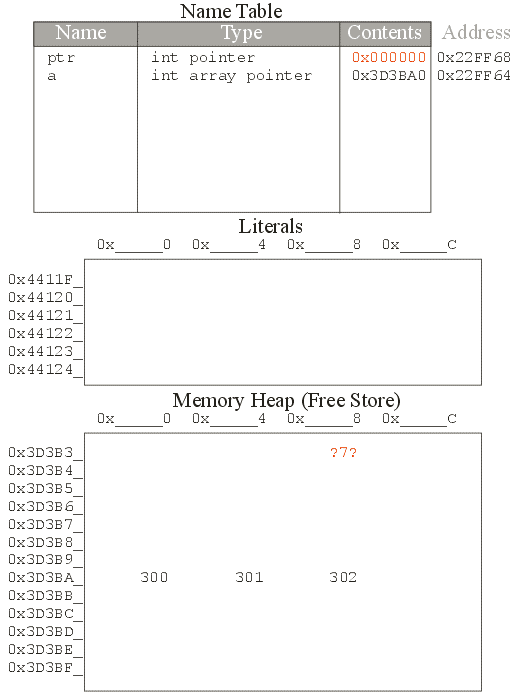
ptr = NULL; delete ptr;
delete
operator is neededdelete[] a;
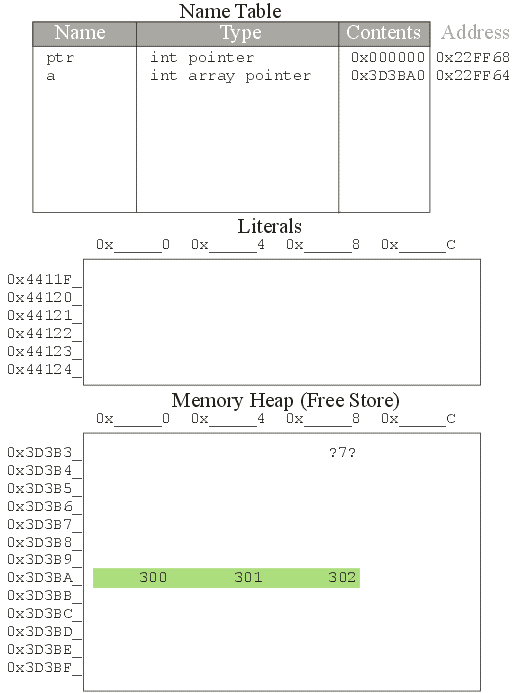
a = NULL;
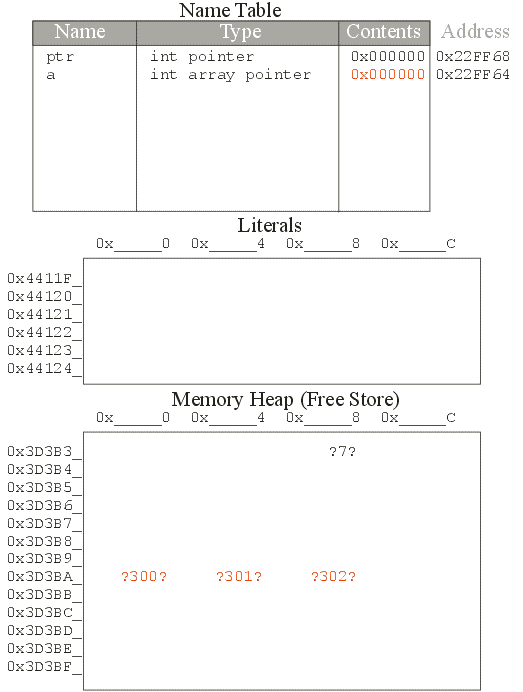
new operator but not returned to
the heap using the delete operator
int *otherptr;
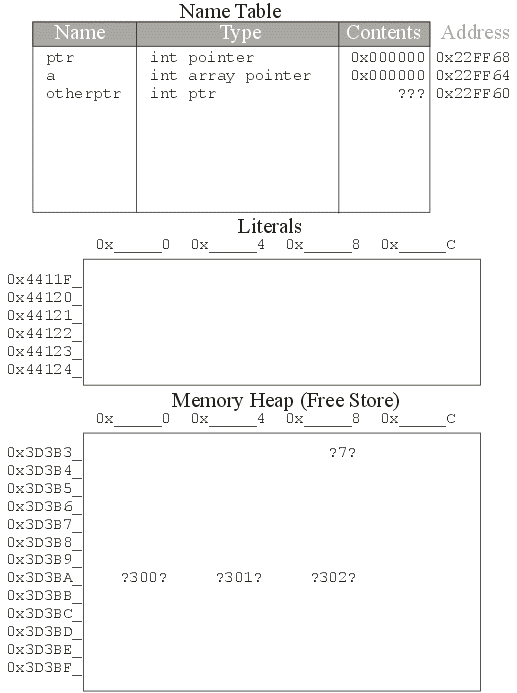
otherptr = new int;
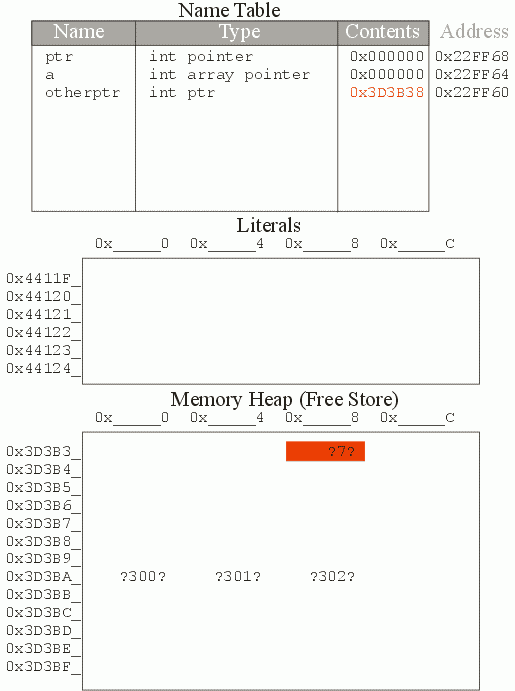
*otherptr = 4;
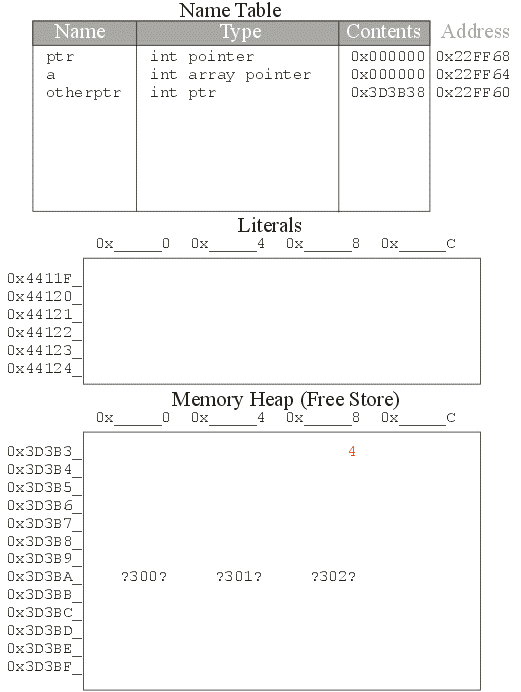
otherptr = new int;
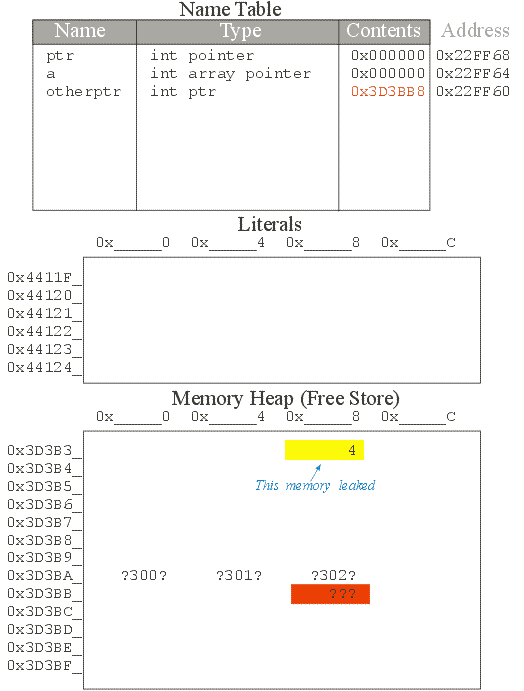
*otherptr = 5;
